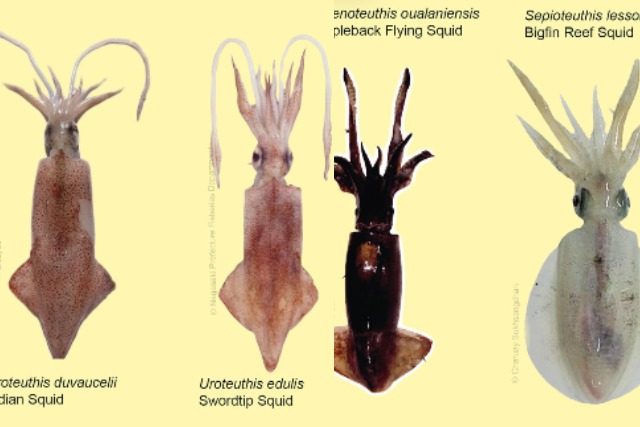
A museum in Visayas joined Netflix’s “Squid Game” online craze by introducing species of squids considered “commercially important” in Panay.
The National Museum Western Visayas referenced the game “Red Light, Green Light” from the Korean survival drama in their post on September 27.
The regional museum also attached an infographic where the squids are placed inside shapes that are either colored green or red.
“SQUID GAME. Will you accept the challenge and play children’s games with us this #UnderwaterMonday?” it said.
“Today we play ‘Red Light, Green Light’ as we introduce some of the species of squids identified as one of the commercially important mollusks of Panay,” it added.
“Squid Game follows” a group of people with huge debts as they played a series of deadly games for a prize money $84 million (100 billion won).
One of the games in the series is the “Red light, green light” where a large freaky doll orders the players to either stop or move in a field.
Here are the descriptions of the species the museum introduced in reference to the game:
Red light
Indian squid (Uroteuthis duvaucelii):
The museum stated that this species is found in the Indo-West Pacific region which includes Mozambique, the South China Sea, the Philippine Sea and Taiwan.
“It is found up to the depth of 170 meters. They feed on fishes, crustaceans, and squids. In Panay this species is caught using trawl, motorized bagnets, and traps,” read the post.
Big fin reef squid (Sepioteuthis lessoniana):
“This species is caught using spear, traps, and trawl. They inhabit warm coastal waters, from 0-100m deep. They are carnivorous and feed on mollusks, fishes and prawns,” read the post.
Green light
Sword tip squid (Uroteuthis edulis):
“They are common in the Indo-Pacific region and are found at the depth of 30-170 meters. Juvenile sword tip squid feed on crustaceans while the adults feed on fishes,” read the description.
Purpleback flying squid (Sthenoteuthis oualaniensis):
“Jiggers are used in catching them. They occur from sea level up to the depth of 1000 meters. They are widely distributed in the western Pacific and Indian Ocean,” read the description.
‘Squids are important’
The Western Visayas museum also said that squid production in Panay totaled 5,838 metric tons in 2019, citing data from the Fisheries Statistics of the Philippines.
It also cited a study published at the Philippine Journal of Fisheries that stated the Indian squid as the second most commercially important mollusk of the island.
“In the recent study conducted on the mollusks of Panay, the Indian squid ranks 2nd among the commercially important mollusks in the island; this is due to its high local and export commercial value,” it said.
The museum then noted that this information should bring awareness to the need to protect the country’s rich marine diversity.
“The Philippines has a biologically diverse marine water; but marine organism populations are threatened. Destructive fishing gear, over-catching, and polluted ocean negatively affect them,” it said.









